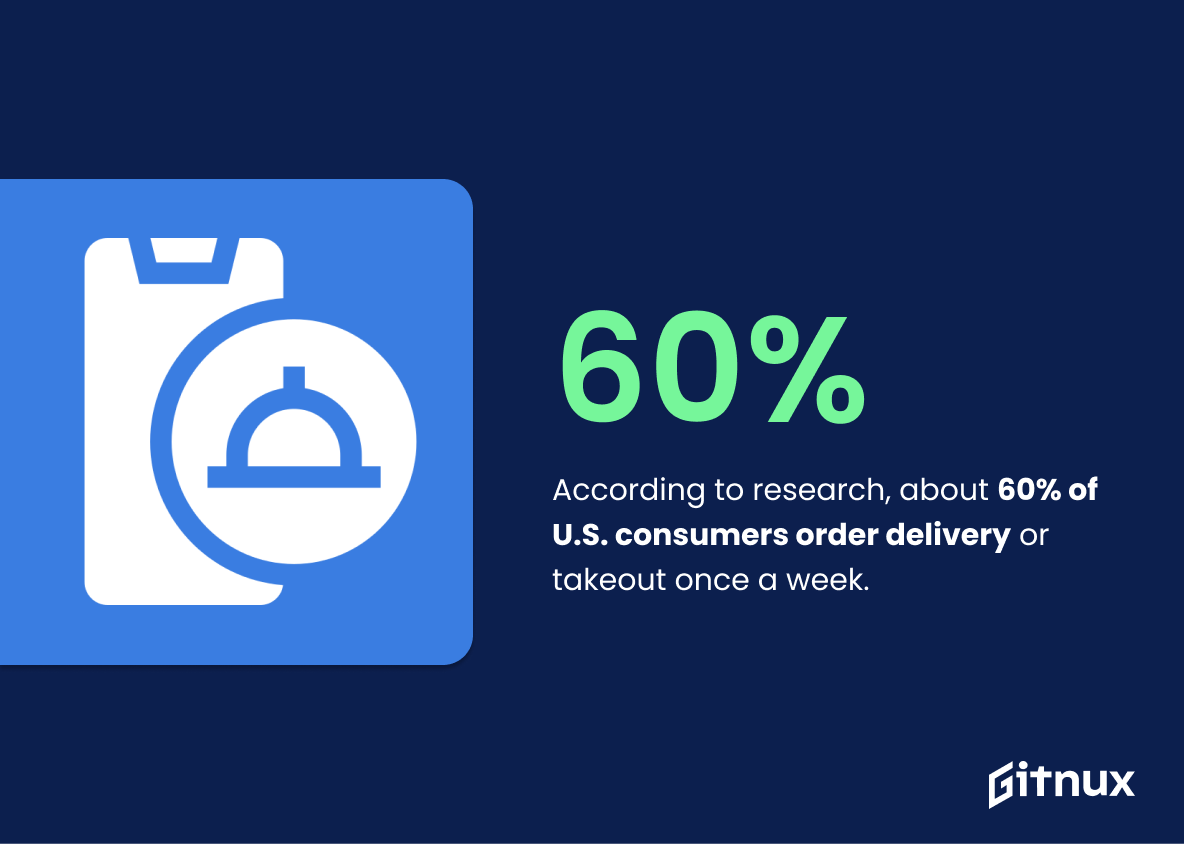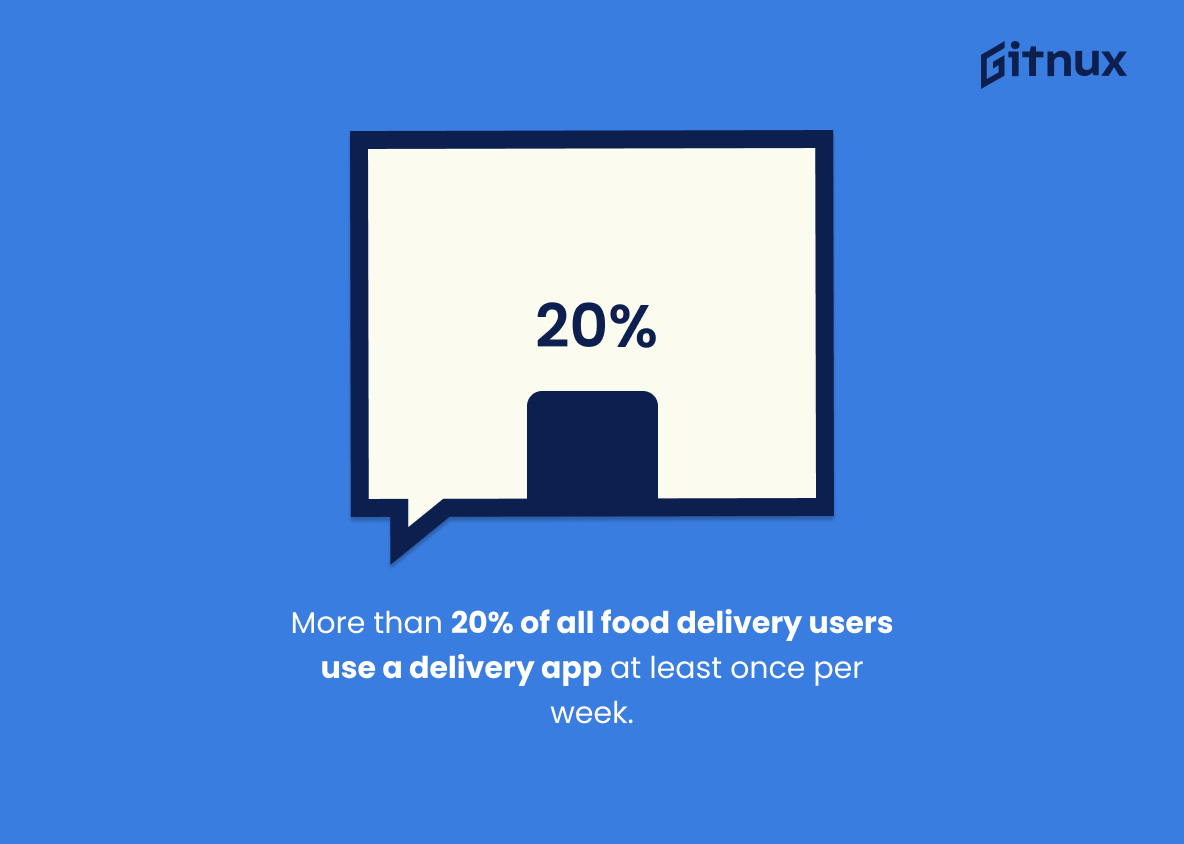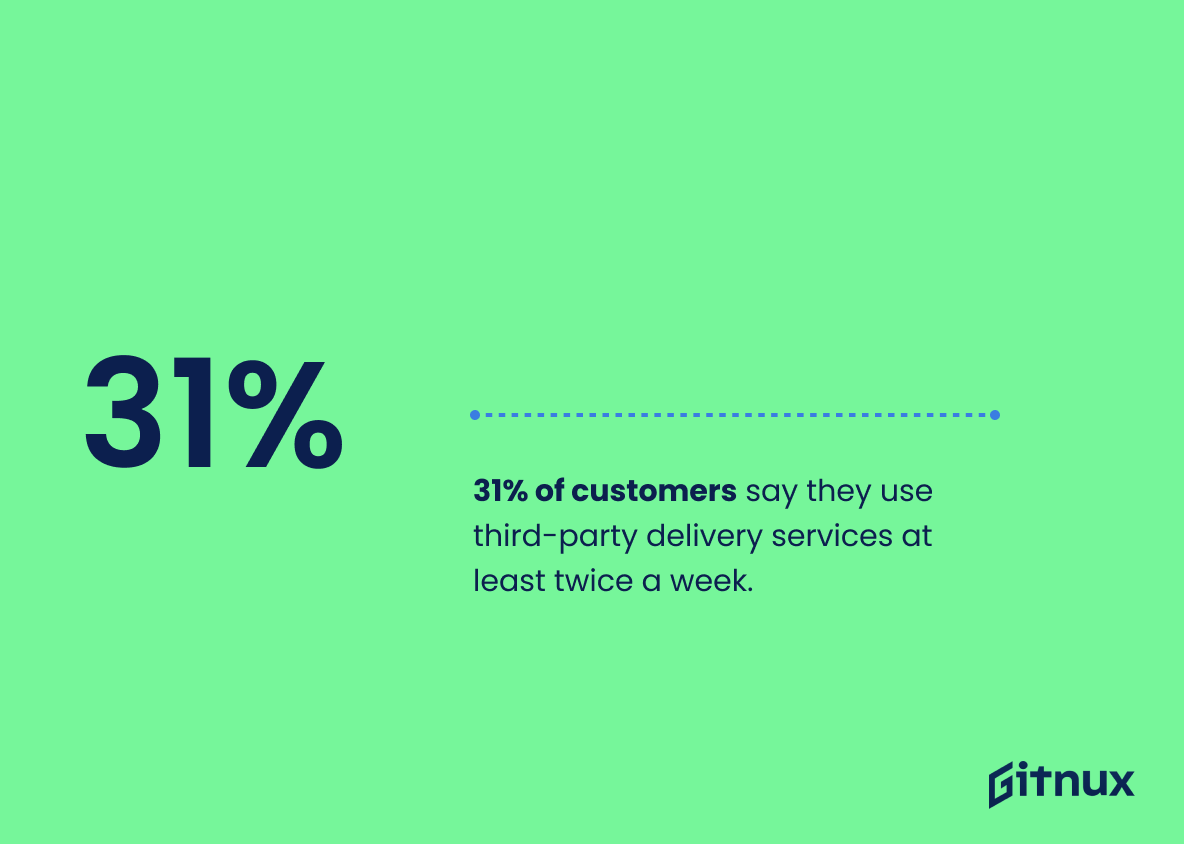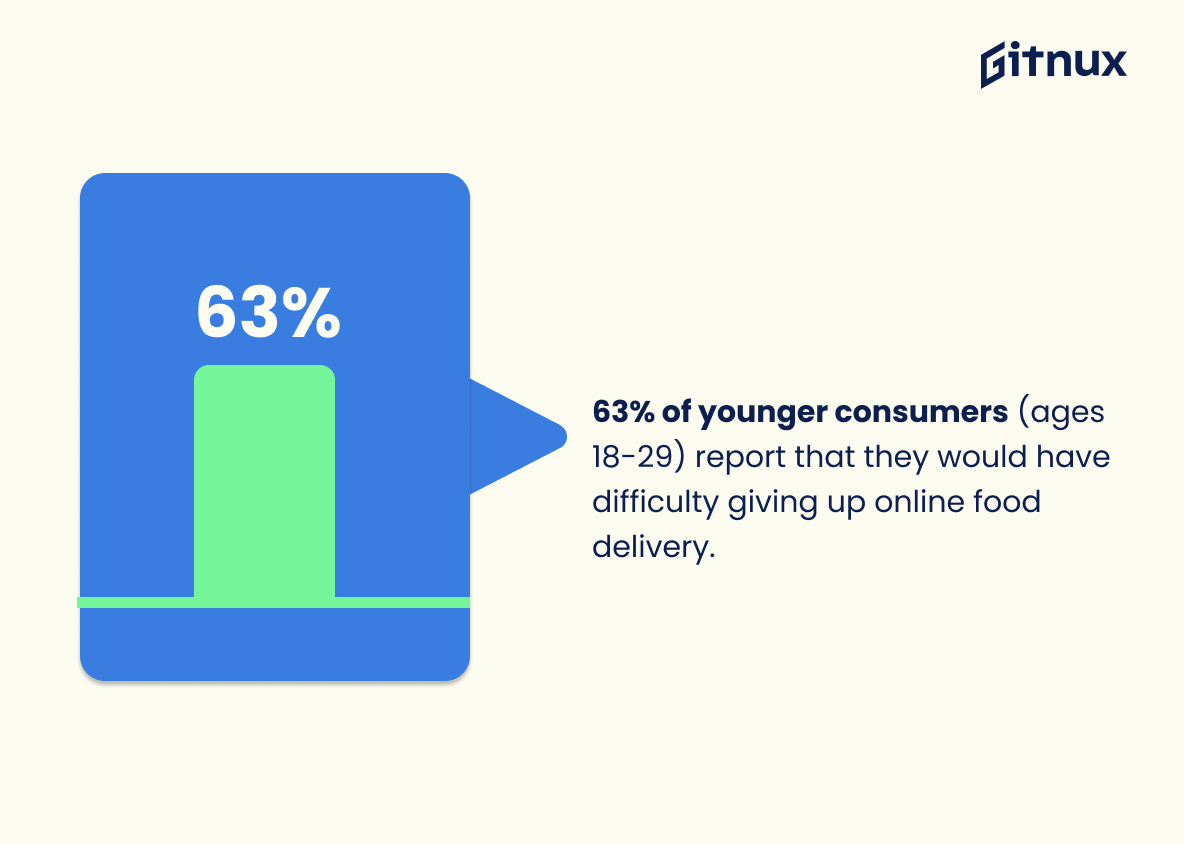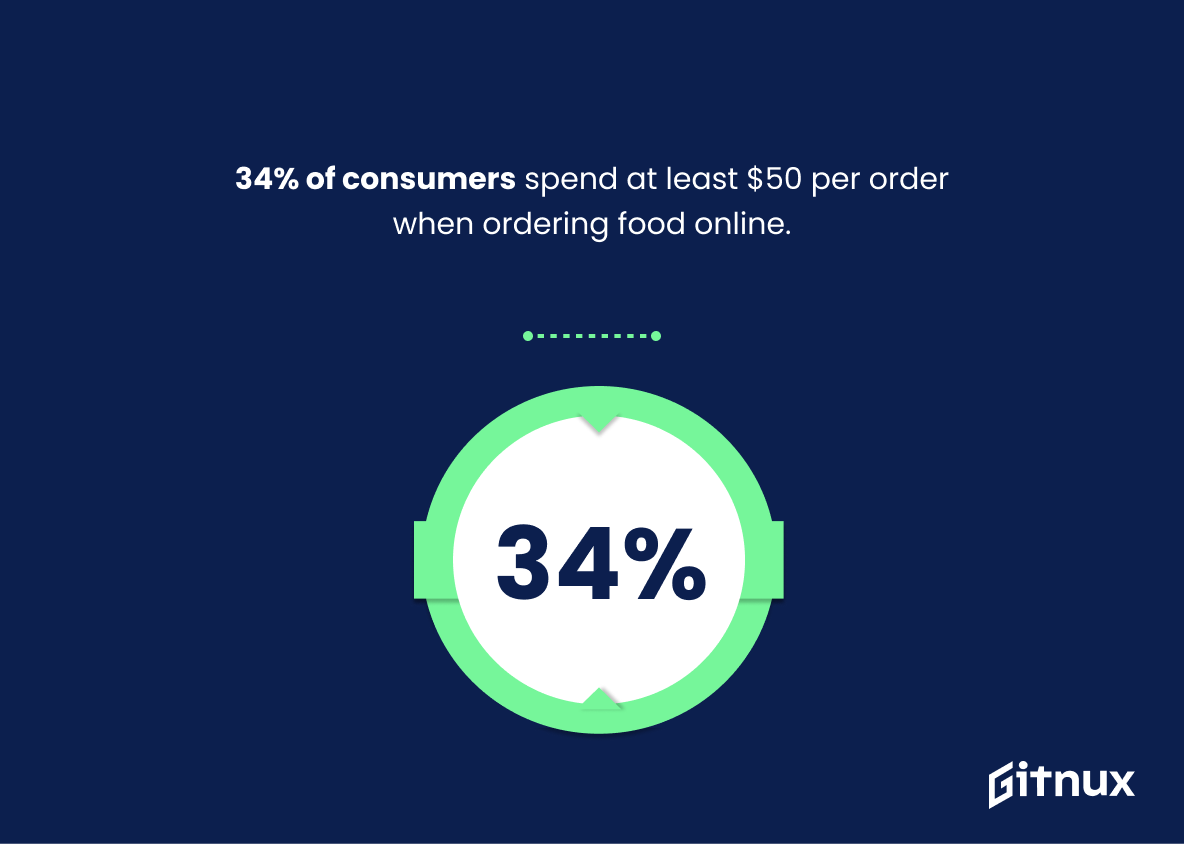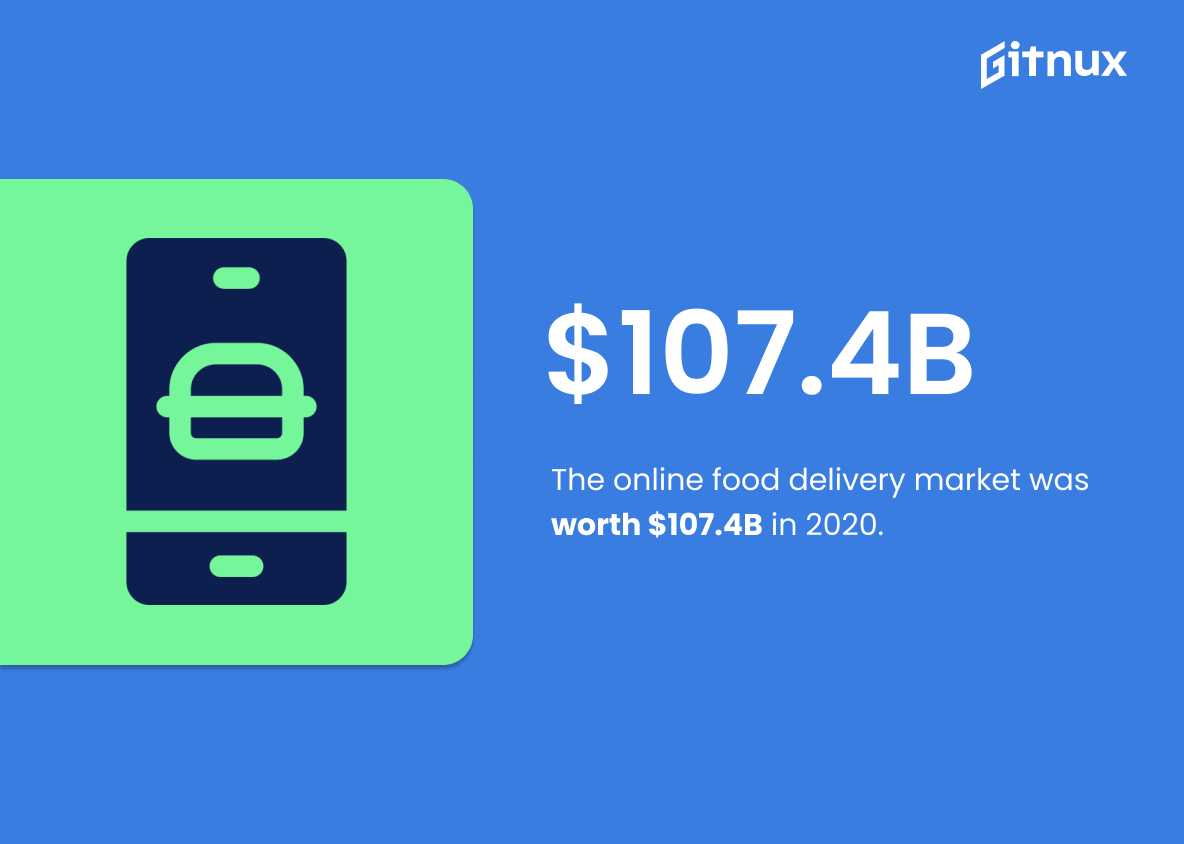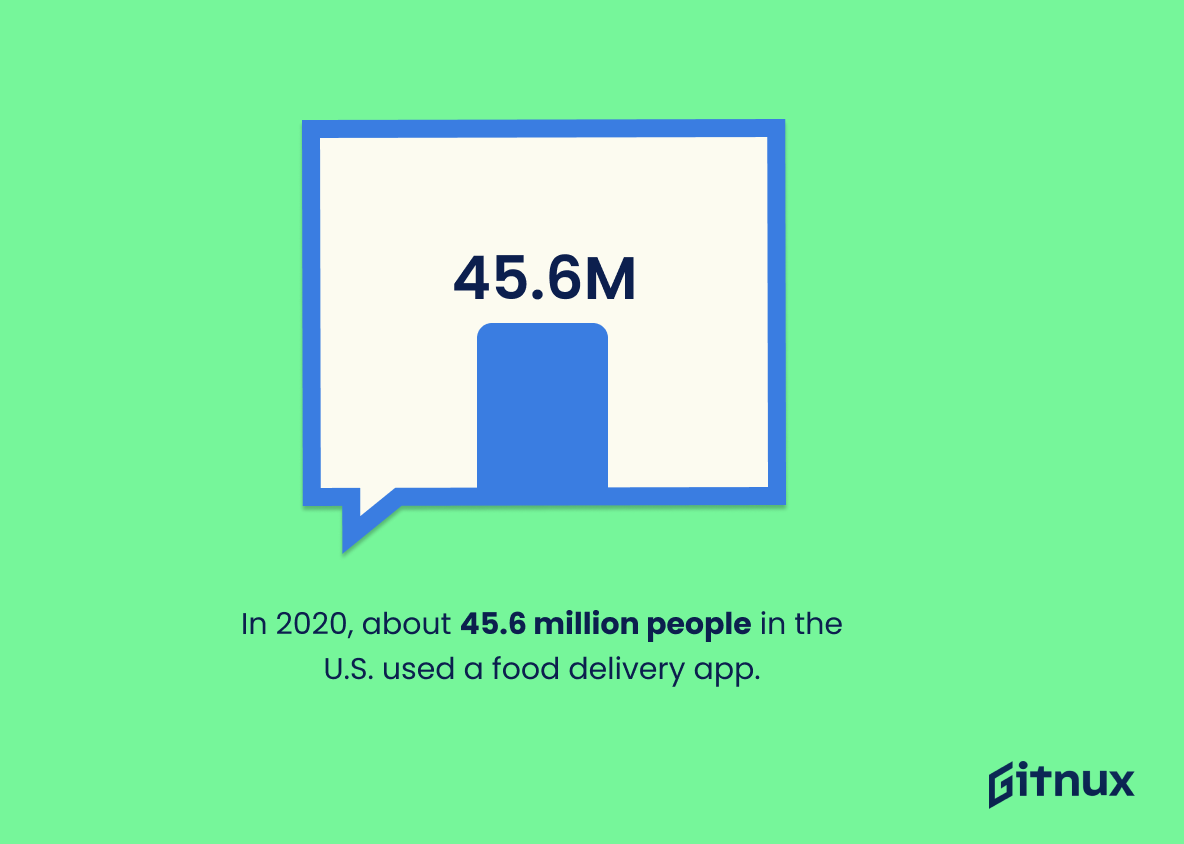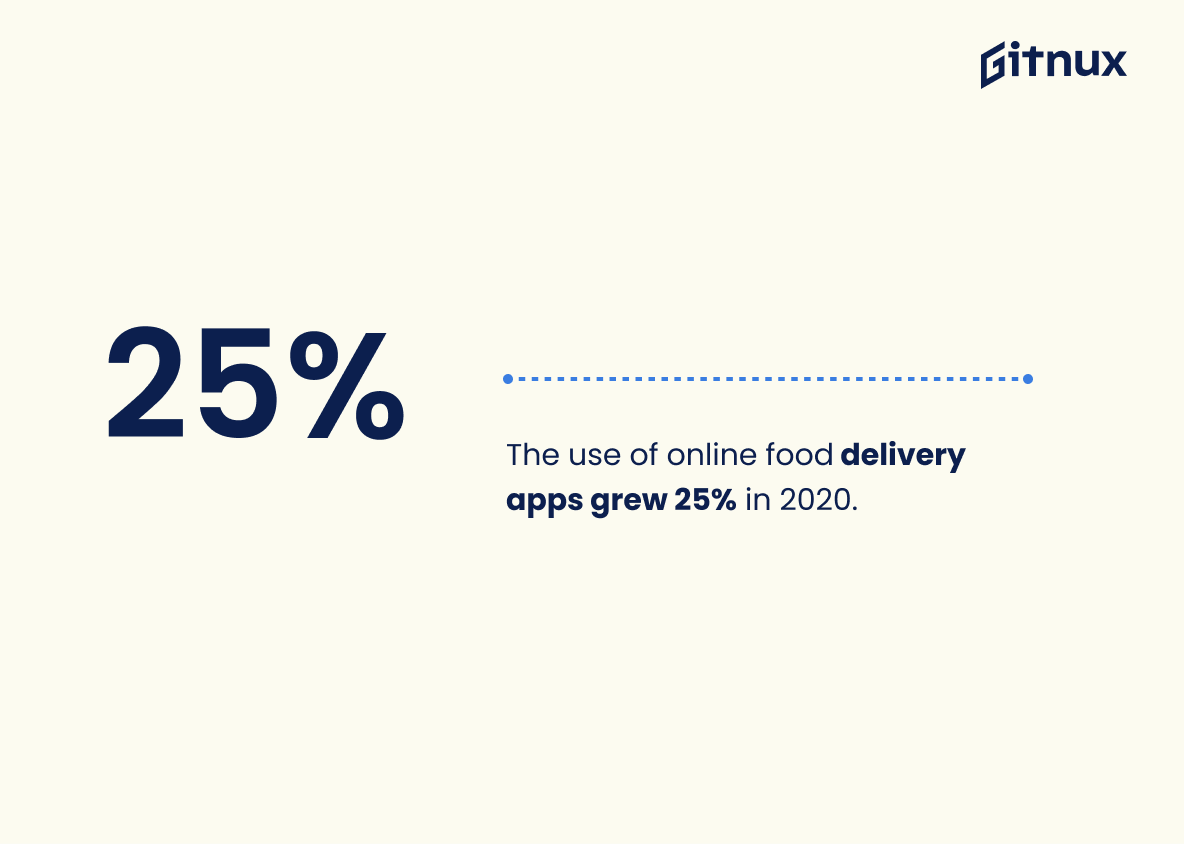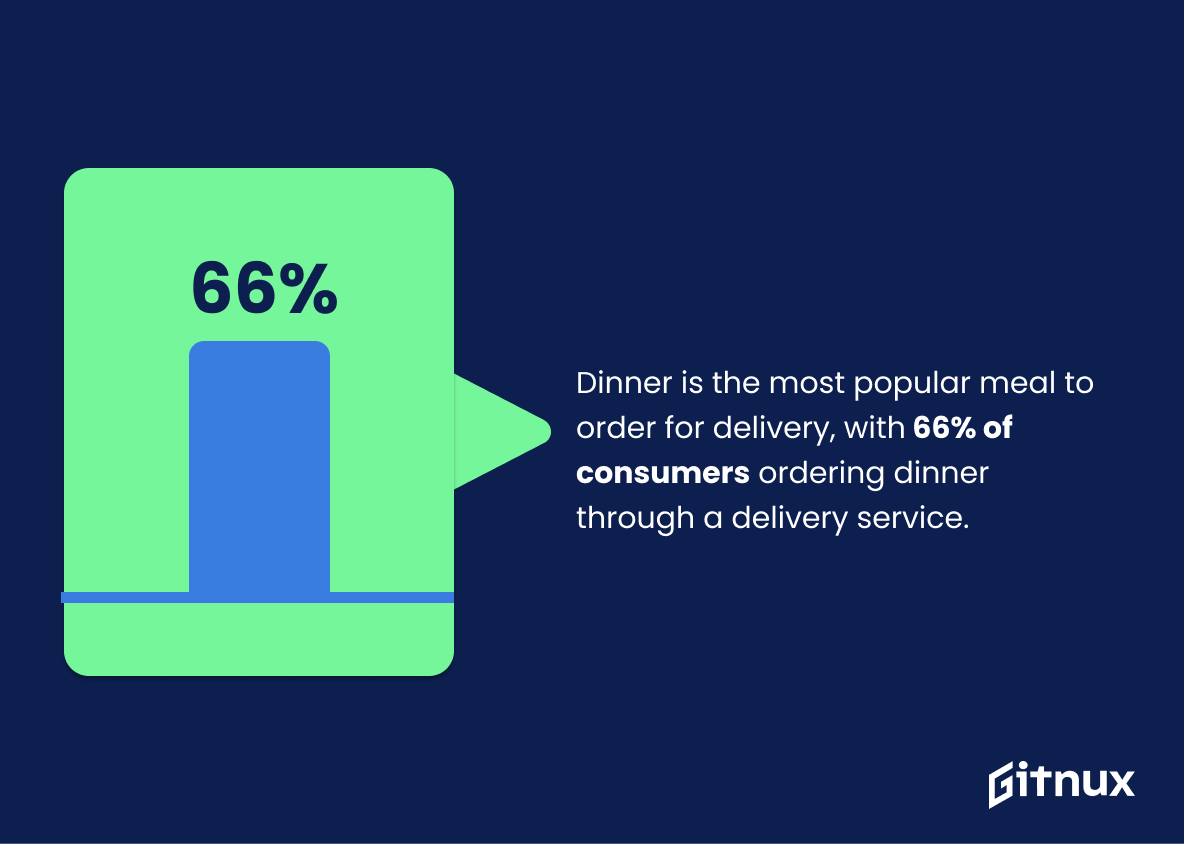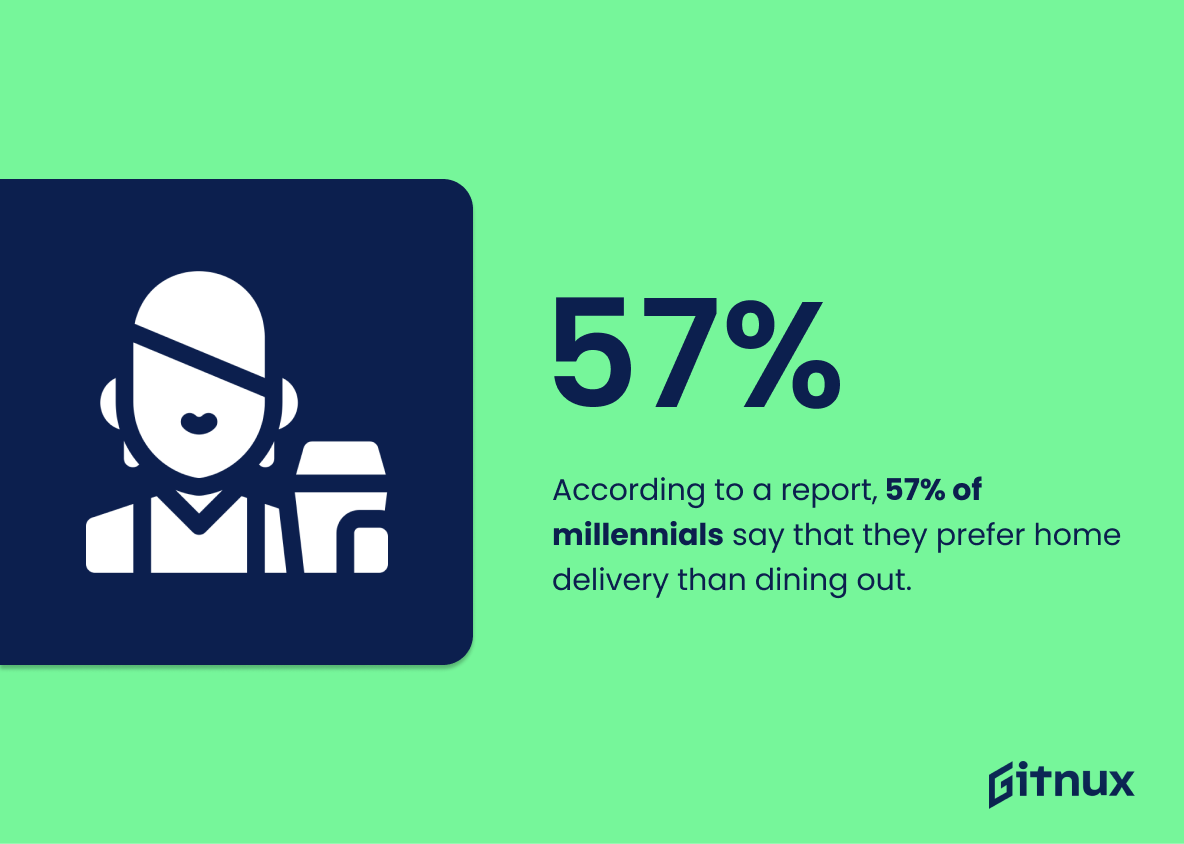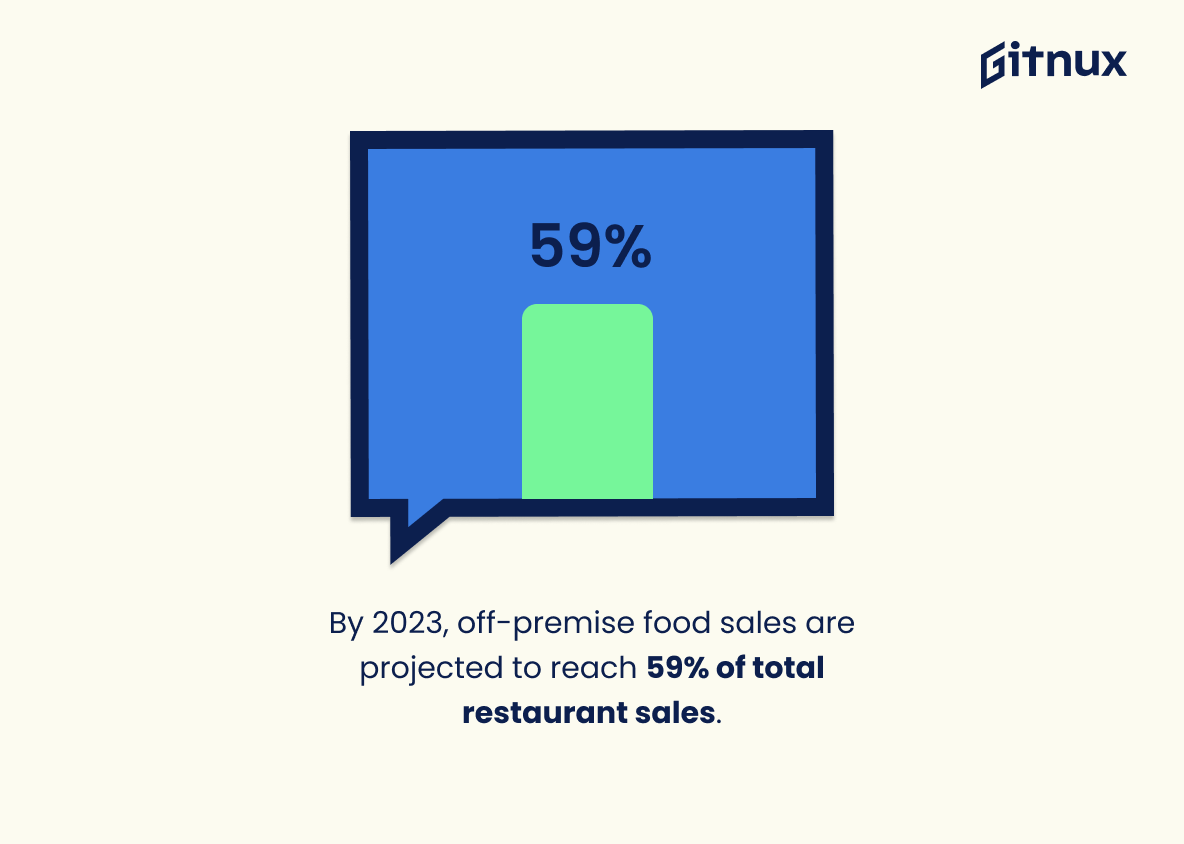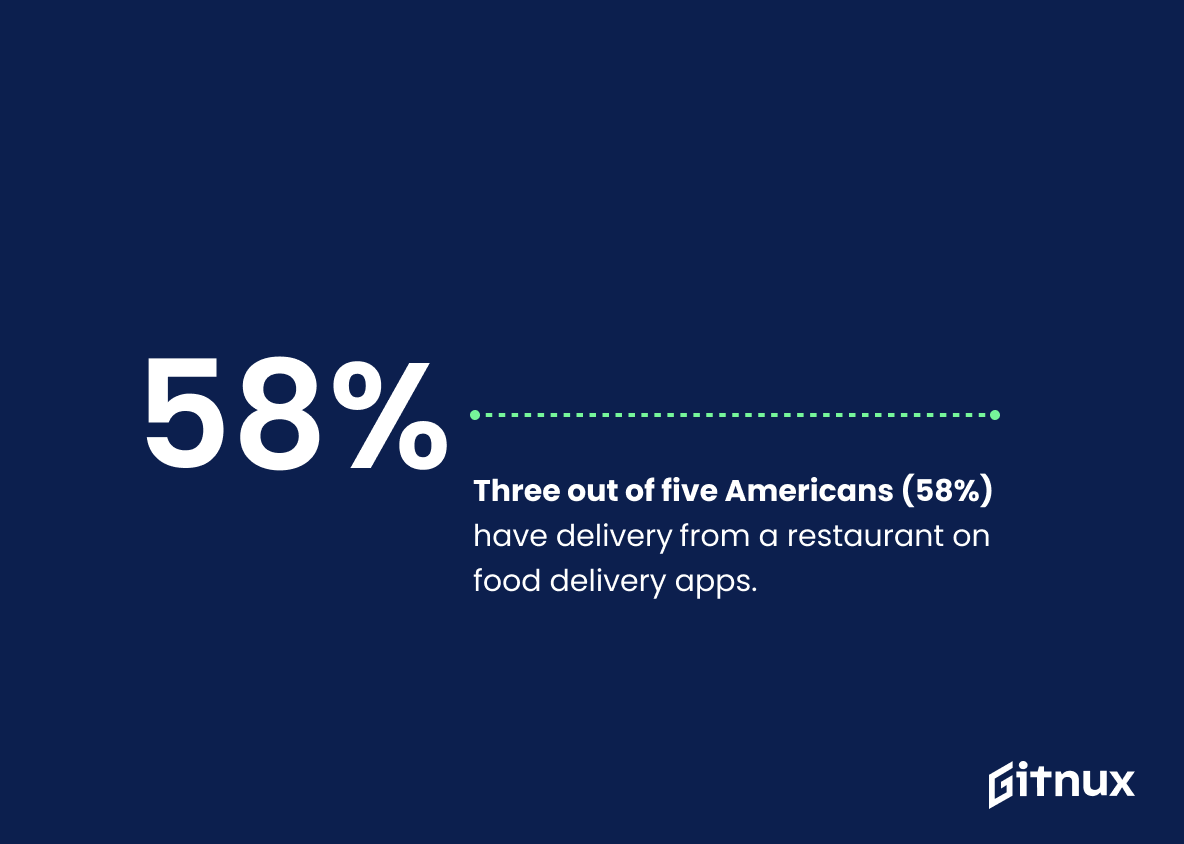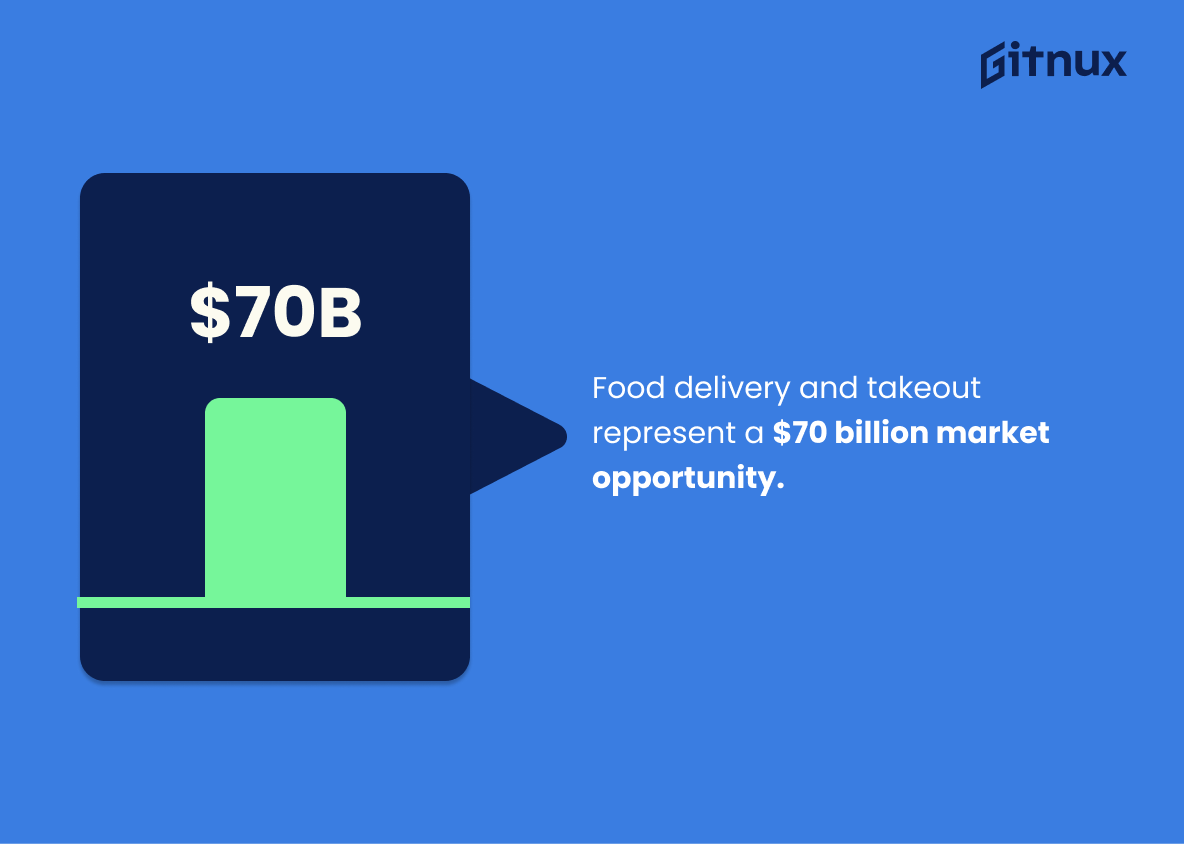In the fast-paced world we live in today, it’s not a surprise that online food ordering has become an integral part of our lives. It’s convenient, time-saving and offers a plethora of options right at our fingertips. With recent advancements in technology, it has revolutionized the way we eat, order, and experience food. But what exactly lies behind the screen? What are the numbers saying? This blog post delves deep into the enthralling world of online food ordering statistics, analyzing the trends, behaviors, and impacts this boom has had on our global society. From the number of users to popular food items, adoption rates to projected growth, strap in as we take you through an engaging, number-filled exploration of the rapidly evolving and tantalizing universe of online food ordering.
The Latest Online Food Ordering Statistics Unveiled
According to research, about 60% of U.S. consumers order delivery or takeout once a week.
Undeniably, the fact that approximately 60% of U.S. customers engage in weekly delivery or takeaway orders vividly illustrates the insatiable appetite of American consumers for convenience and expediency provided by online food ordering. These findings not only underline the imperative role of digital platforms in the modern food industry, but also highlight a lucrative market avenue for businesses aiming to capitalize on this emerging trend. Thus, businesses, particularly those in food industry, must include online ordering facility to tap into this vastly growing consumer behavior. This emblematic data point brings home the undeniable truth that the shift towards online food ordering is not just a passing fad, but a significant alteration in consumer habit.
More than 20% of all food delivery users use a delivery app at least once per week.
Digesting this juicy nugget of data, we can get a tantalizing taste of how deeply integrated food delivery apps have become in our daily lives. Considering that over a fifth of all food delivery users regularly engage with these platforms on a weekly basis, it clearly signifies a transformative shift in people’s food consumption habits. This signifies a burgeoning opportunity for businesses and marketers seeking a slice of the bountiful pie of the online food ordering industry. In addition, for app developers and start-ups, it provides a compelling insight into the lucrative market for innovative tech solutions that can satisfy our insatiable appetite for convenience. Above all, it magnifies the immense role of digital technology in reshaping our culinary preferences and engagements, making this statistic a key ingredient that can spice up any discussion on online food ordering trends.
31% of customers say they use third-party delivery services at least twice a week.
Unearthing the assertion that 31% of customers engage with third-party delivery services at least twice weekly offers significant insights in the sphere of online food ordering. It unveils a substantial dependence on these platforms for culinary needs, hinting at the evolution of consumer behaviour propelled by the convenience of digital technology. Interpreting this percentage could aid businesses in comprehending their audience’s preferences, strategizing their online food delivery methods and ultimately catapulting to the forefront of the swiftly growing online food industry. Such data further contributes to assessing market potential, refining investment decisions and predicting trends in this digital food delivery landscape.
63% of younger consumers (ages 18-29) report that they would have difficulty giving up online food delivery.
As we navigate the labyrinth of online food ordering statistics, one revelation that turns heads is the elevated attachment of younger consumers, particularly those falling in the 18-29 age bracket, to this digital convenience. A remarkable 63% of this population disclosed that parting ways with online food delivery services would not be easy, hinting at a strong bond. This revelation doesn’t simply stand in isolation, it casts a spotlight on several implications relevant to the broader narrative.
Firstly, it underscores the indispensability of digital food ordering platforms in the culinary habits of the millennial and Gen Z demographics. For them, these platforms are not merely an option but a lifestyle staple they can’t easily dissociate from, therefore highlighting the thriving market opportunities in this age group.
Additionally, this factual nugget emphasizes the importance of businesses being tech-forward and consumer-centric, as the bond these young consumers foster with online food delivery services is deeply interlinked with convenience and ease of access. It unrolls a roadmap for future trends shaping the food industry – from restaurants to chains to app developers – with the younger cohorts steering the direction. And finally yet importantly, it sketches out an intriguing picture of assiduous digital dependence, reminding us of how integral the virtual world has become to our everyday lives, even when it comes to fulfilling our most basic need – food.
34% of consumers spend at least $50 per order when ordering food online.
Diving into the world of online food ordering, we find intriguing trends shaping consumer habits. For instance, consider the fact that 34% of consumers regularly spend at least $50 per order—a compelling snapshot of the market. This figure allows us to dish out some delectable insights. It illuminates a good portion of consumers who aren’t hesitant to dig deeper into their pockets for convenience, highlighting the potential profitability for food businesses in the digital sphere. With this in mind, entrepreneurs can intelligently position their promotions and target audience, capitalizing on this ready-to-spend segment. In the larger panorama of online food ordering, this data point indeed adds valuable flavor to our understanding.
The global online food delivery market reached a value of $107.4 Billion in 2020.
Reflecting back on the startling curve of ascent the online food delivery market has taken, we find ourselves staring at an impressive peak of $107.4 Billion reached in 2020. This towering number isn’t just a testament to the industry’s robust health but is, in fact, an undeniable pointer towards the dynamic shifts in consumer behaviors and preferences. Not only does this form the meaty heart of the story when tracing the industry’s journey, but also impressively underscores the market potential for businesses exploring or already dabbling in the realm of online food delivery. The sheer magnitude of this figure in 2020 represents a pot full to the brim with opportunities, ones that can fuel game-changing strategies in the blog post aiming to inform, guide, and shape decisions in the world of online food ordering.
In 2020, about 45.6 million people in the U.S. used a food delivery app.
Delving into the compelling world of online food ordering, it’s truly captivating to realize the quantum leap in its usage. In the vibrant canvas of 2020 alone, a staggering 45.6 million people in the U.S. found themselves reaching out to the convenience of a food delivery app. This concrete figure not only propels the essence of the narrative being portrayed in this blog post but casts a spotlight on the undeniable pull towards technological advancement in meeting basic sustenance needs. It underscores the salient transformation of consumer behaviors, their comfort with technology, and the market’s indisputable response to on-demand economy. This statistic, hence, paints a striking reality about where we stand today, writing the future chapters of digital dining.
The use of online food delivery apps grew 25% in 2020.
Unveiling the compelling narrative behind the growth in online food delivery services in 2020 adds a lively zest to our post about Online Food Ordering Statistics. This 25% surge dials up the relevance of the digital world in shaping eating habits and exposes a shifting trend that redefined the culinary landscape during the pandemic. It serves as a taste-bud teaser to foodpreneurs who are hungry for opportunities in the evolving digital marketplace, and gives the blog’s readers a panoramic view into the dynamic online food delivery universe.
Dinner is the most popular meal to order for delivery, with 66% of consumers ordering dinner through a delivery service.
In the pulsating world of online food ordering, understanding consumer preferences is like knowing the secret ingredient to a best-selling recipe. The case is no different for meal preferences; when it comes to ordering delivery, dinner takes the delectable crown with a whopping 66% of consumers opting for it. This not only underscores the importance of dinner menus for restaurants in generating sales but also helps shape marketing strategies. For instance, businesses can focus on providing enhanced dinner options or offering special dinner deals, all while capitalizing during peak hours. Fathom this: if you run a delivery service and don’t prioritize your dinner service, you risk missing out on a sizeable chunk of your potential market. Plenty food for thought, isn’t it?
33% of consumers are willing to pay a higher fee for faster food delivery.
In the pulsating world of online food ordering, this riveting statistic elucidates a cardinal point: an impressive 33% of consumers have expressed readiness to shell out additional fees for speedy food delivery. This not only underscores the ascending emphasis on convenience and time-efficiency amidst the public, but it also serves as a vital beacon for businesses within this industry. By fine-tuning their services to meet this discernible demand for swifter delivery, they may significantly augment their revenue. Moreover, this could also instigate innovative strategies, pushing the food delivery service landscape to new heights of competitive excellence. Ultimately, a statistic like this paints a vibrant picture of current consumer behavior, setting the tone for future developments in the online food ordering world.
According to a report, 57% of millennials say that they prefer home delivery than dining out.
Navigating through the realm of online food ordering, this statistic serves as a beckoning lighthouse, illuminating a significant trend among millennials. With 57% voicing their preference for home delivery over dining out, we see a clear indication of their dining habits gravitating towards a love of digital convenience and an appreciation for the comforts of home. These preferences offer a key insight within the scope of a blog post on online food ordering statistics, shedding light upon the behavioral patterns of a substantial demographic in our digital age. This tilt towards home delivery could potentially catalyze opportunities for businesses to pivot, innovate and tap into this burgeoning market demand.
By 2023, off-premise food sales are projected to reach 59% of total restaurant sales.
Projecting into the not-so-distant future, the unignorable drift towards off-premise food sales, which are foreseen to swoop up as much as 59% of total restaurant sales by 2023, highlights a seismic shift in the dynamics of the food industry. It’s like a bubbling gastronomic revolution that, when discussing online food ordering statistics, cannot be overlooked. This anticipated dominance of off-premise sales essentially underscores the expanding influence of online platforms in shaping the sustenance scene. It magnifies not only the escalating preference for home comforts over dining out ambiance, but also accentuates how digital convenience is transforming the culinary cosmos. So, those striding in the food industry’s digital pathway should brace themselves for a customer base progressively more inclined towards online food ordering – a trend anywhere but downhill.
Three out of five Americans (58%) have delivery from a restaurant on food delivery apps.
Diving into the scrumptious world of online food ordering statistics, one cannot ignore the flavorful detail that a savory 58% of Americans have a taste for taking delivery from a restaurant on food delivery apps. This statistic serves as a hearty reminder that the significant proportion of appetites served by digital platforms illustrate modern America’s entrenched relationship with comfort and convenience in feeding its love affair with food. This percentage, akin to a chef’s secret ingredient, shows how online food ordering patterns have dramatically reshaped the food industry, altering the way restaurants operate and engage with their customers. Decoding this percentage, we plunge right into the heart of the online food economy, understanding the palate of American consumers in the digital food marketplace. This adds a spicy touch to our exploration of the trends, challenges, and opportunities in the rapidly expanding universe of food delivery apps.
Food delivery and takeout represent a $70 billion market opportunity.
In the swirling world of online food ordering, a gargantuan $70 billion market opportunity teases the tantalizing potential that lies ahead. This astronomic figure not only unveils a mouth-watering prospect for businesses, techpreneurs and investors, but it serves as a testament to the ever-growing global appetites for convenience and immediacy. As we navigate through this burgeoning landscape, this statistic is the secret ingredient that flavors our understanding of the currents and trends, shaping the direction, strategies and narratives of food delivery and takeout in the digital era.
Conclusion
In sum, technology advancements and changing customer behaviors have dramatically reshaped the landscape of the food industry, with online food ordering statistics serving as infallible proof of this transformation. As the convenience-driven culture continues to thrive and as digital integration becomes the new normal, businesses must ride the wave of digitalization to meet and exceed customer expectations. These fascinating numbers and trends don’t just tell the story of the current digital food experience, but also offer insight into future market potential and growth. Jumping on the online food ordering bandwagon is no longer simply a strategy, it’s a crucial investment for survival and success in an increasingly digital food landscape.
References
0. – https://www.www.statista.com
1. – https://www.www.morganstanley.com
2. – https://www.www.restaurantbusinessonline.com
3. – https://www.www.reportlinker.com
4. – https://www.www.fooddive.com
5. – https://www.connecteam.com
6. – https://www.blog.euromonitor.com
7. – https://www.upserve.com
8. – https://www.learn.g2.com
9. – https://www.www.emarketer.com
10. – https://www.www.thinkwithgoogle.com
11. – https://www.www.nrn.com
